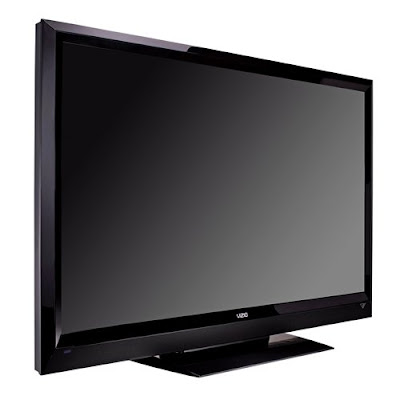- Back to Home »
- Articles , best lcd tv , lcd tv , What is an LCD TV »
- What is an LCD TV?
Posted by : lcd
Thursday, April 4, 2013
What is an LCD TV?

An LCD TV is a flat panel digital television that uses Liquid Crystal Display (LCD) technology verses the competing plasma technology or the older cathode ray tube (CRT) technology. LCD is also used in computer displays, and an LCD TV is simply a larger monitor with a built-in TV tuner, or with the ability to display high definition resolutions fed from a set-top digital display box provided by a cable TV or satellite vendor.
LCD TV and plasma TV are the two leading types of high-definition televisions today, easily spotted by their thin profiles of just a few inches. Old-style CRT TVs had an extremely deep footprint to accommodate a vacuum tube device. CRT TVs are also very heavy with a 36-inch (91cm) model weighing over 230 pounds (108km), while an equivalent LCD TV weighs closer to 37 pounds (17kg) and can be hung on the wall like a movie screen.
LCD TV uses a five-layer technology within the panel to bring colors and pictures to life. These layers consist of a backlight, polarized glass, a colored pixel mask, liquid crystal solution, and a second sheet of polarized glass. Each pixel in the LDC screen has a dedicated transistor that manipulates the orientation of crystals through precise electrical charges and voltages. Crystal orientation acts like a shutter to block or allow the backlight to flow through specific colored pixels, creating the hues that make up the picture.
LCD technology produces negligible radiation and uses a fraction of the electricity of plasma TV. Another favorable attribute of LCD TV is that the screen is non-reflective, making it an excellent choice for a room with windows, glass doors, skylights or other sources of light. LCD TV is also a good choice for locations where lamps or overhead lighting would otherwise reflect off the set and impair viewing.
LCD TV comes in many sizes from small screens fit for a kitchen counter to giant displays 100 inches (254cm) and larger. The largest TVs are limited to a few manufacturers like Sony®, Panasonic® and LG®, and plasma TV might be less expensive than LCD in this elite category. If looking for an LCD TV in a more common screen size of up to 55 inches (140cm), you’ll have plenty of choices.
When shopping for an LCD TV there are a few specifications to keep in mind. Look for a wide viewing angle so that colors won’t wash out when viewed off center. Brightness (expressed as nits) isn’t a big concern, as the average LCD TV is plenty bright, and pixel response time should be less rather than more, as a fast response time means slow pans and action shots will remain clear rather than blur or ghost.
Some people prefer plasma TV to LCD, because plasma has been traditionally credited with the ability to display whiter whites alongside deeper blacks in the same picture frame without washing the black out. While LCD TV has improved in this area, experts still give plasma the edge. Plasma technology also does not suffer from ghosting, though newer LCD TVs no longer have this problem with improved pixel response time.
As a final consideration, the LCD TV backlight does not dim over time but does burn out eventually, and is generally not worth replacing as this costs more than buying a new TV. The life expectancy of the backlight is typically rated at 60,000 hours. If you watch TV six hours a day, it will take 27 years to reach 60,000 hours. In households where the television is left on virtually all day and night, a backlight might be expected to last some 11 years (assuming 15 hours per day). Plasma TV has a half-life of 60,000 hours, meaning the display will be half as bright as it was when new, but will continue to function.
Suggested articles :
- LCD TV










